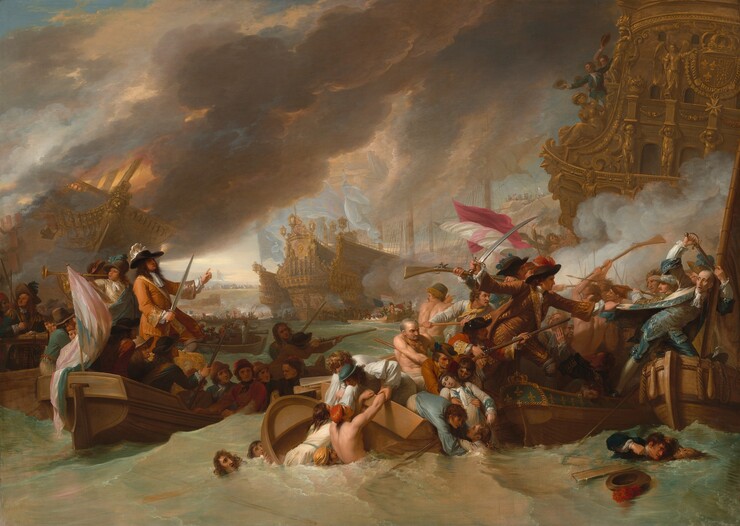Whether you’re an art history buff or just looking to learn more, there are plenty of great websites to help you gain insight into history and art. These sites contain articles on everything from the Renaissance and the Dark Ages to Doctoral degrees and the conceptual art movement.
Romanesque art era
During the period from 1050 to 1250, European art took a turn for the serious. The Romanesque art era was a combination of both the Oriental and Roman skills. The work was well crafted, and the materials were of the highest quality.

The Renaissance era ushered in a renaissance of sorts, a return to the natural world and realistic human figures. This was exemplified by Michelangelo’s statue of David, which harked back to ancient Greek art. The Renaissance also saw a resurgence of the religious arts, as Christian ministers needed a way to spread the word about the bible.
The Renaissance was a watershed for Western art, and many artists would go on to contribute to the next era, the Baroque art history website. This period was characterized by a plethora of styles and techniques and is still a highly debated topic today.
High Renaissance
During the High Renaissance, Italy embraced new artistic techniques, which incorporated classical architectural elements into paintings and sculptures. In particular, the artists employed linear perspective and trompe l’oeil to create illusions of space and depth.
Leonardo da Vinci was one of the most influential artists of the High Renaissance period. His painting The Last Supper, painted in oil on the wall of the Santa Maria dell Grazie church in Milan, is a good example of this style. His other famous paintings include The Virgin of the Rocks (1483/1485), The Virgin of the Rocks and the Virgin of the Snows (1485), The Virgin and Child with St. Anne (1499), The Virgin and Child with Saints Peter and Paul (1498), and The Mona Lisa.
Dark Ages
Historically, the term ‘Dark Ages’ has been associated with the Middle Ages, an era of European history between the Classical Antiquity and the Renaissance. The term is still used today to describe a period of time that lasted from about 500 to 1000 AD.
In the first half of the 19th century, scholars began to examine the various aspects of medieval culture. They discovered that the early Middle Ages was a period of innovation and invention. Many European nations developed national identities during the era. They also began to speculate about their political future.
In the early Middle Ages, Western art was protected by Christian monks. Influential people often commissioned religious art. There was a high volume of art produced during this time. A lack of realism characterized the art. Its subjects were predominantly religious.
Realism
During the late 19th century, several French artists were leading a movement called Realism. This movement sought to depict the “real” rather than the idealized version of history as represented by the Academy.
Realism arose in France as a reaction to Romanticism and the escapism of Neoclassicism. It also reacted to the economic exploitation of colonies and the industrialization of the cities.
The movement was loosely defined but was mostly focused on capturing the life of the peasantry. Among the early proponents were Gustave Courbet and Jean-François Millet. Both painted scenes from everyday life in the 1850s and 1860s.
Realism took the form of paintings, prints, and sculptures. It was a reaction to the Neoclassicism of the previous century and the military occupation of Europe. Its subject matter ranged from scenes of peasant life to popular entertainment.
Conceptual art
During the 1960s and early 1970s, the concept of Conceptual Art took off as a cultural phenomenon. The movement challenged the traditional definition of art and the way it was produced. It was created to bypass the commercialized art world and explore art’s social and political relevance.
While Conceptual Art had no one style or specific medium, many artists used forms, materials and concepts to create work. Some artists, such as John Baldessari and Barbara Kruger, experimented with text instead of canvas. Others, such as Lawrence Weiner, adopted language as a central medium.
The first piece of Conceptual Art, “One and Three Chairs,” by Joseph Kosuth, asked the viewer to consider the nature of art. It was a clever piece because it rejected the hierarchical distinction between object and representation.
Doctoral degrees
Whether you are interested in a career as a historian or teacher, a doctoral degree in history can provide you with the knowledge and experience to excel in your chosen field. It also allows you to specialize in your area of interest.
Graduates of a history Ph.D. program are trained to teach, work in museums, and research, among other careers. They may also seek employment in government, nonprofit organizations, or libraries.
In many cases, history teachers offer group instruction and individual instruction. These faculty members have expertise in a variety of topics, including American history, military history, environmental history, labor history, and foreign relations.
